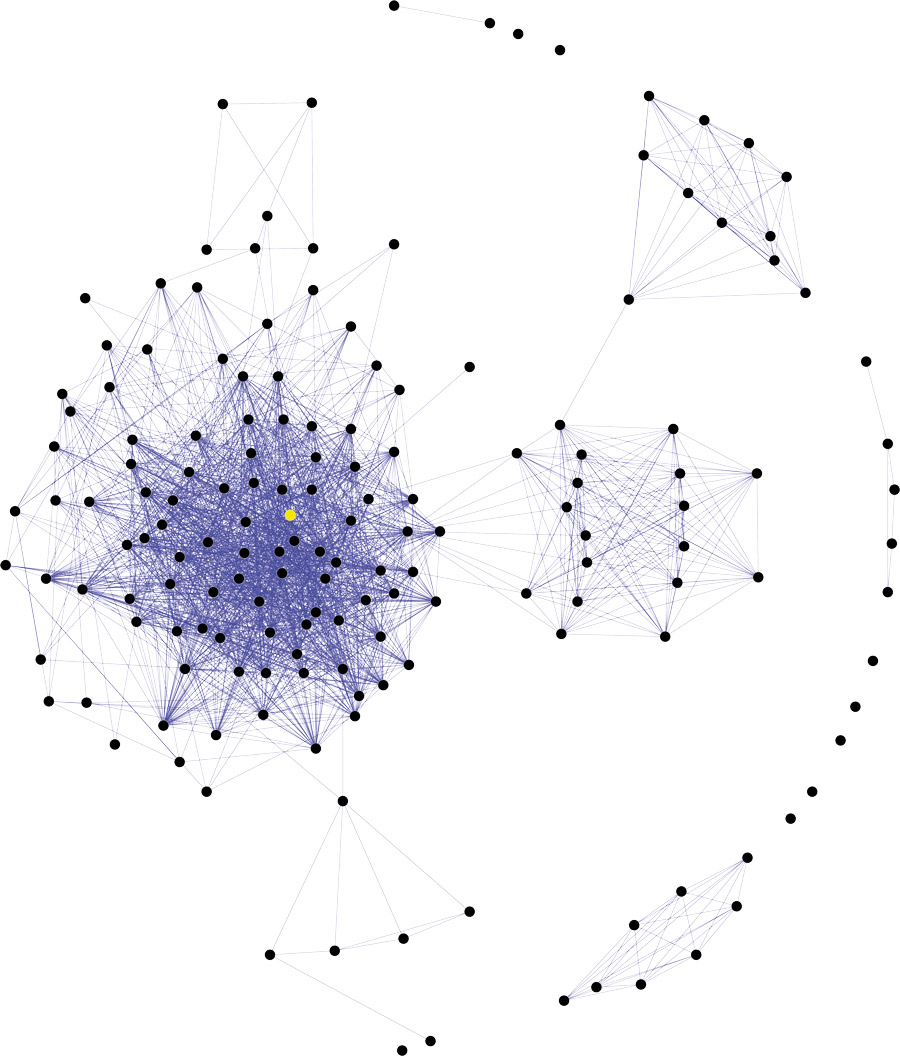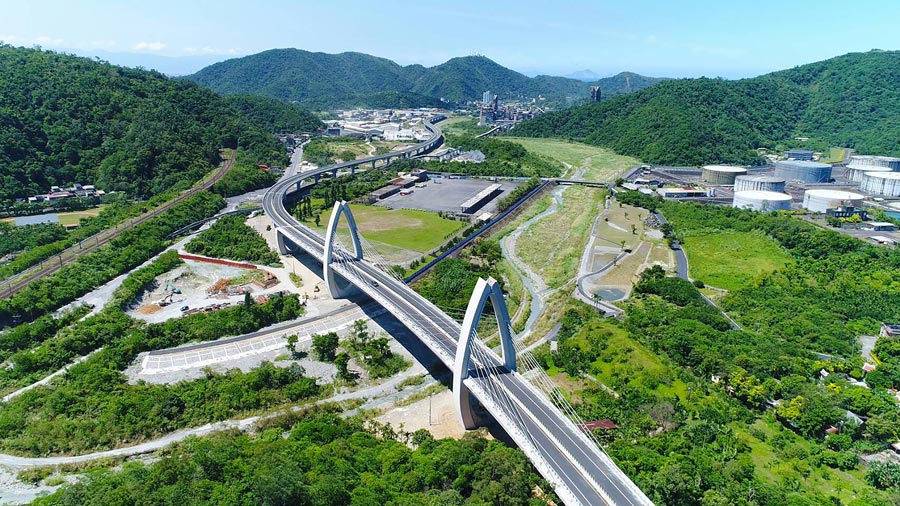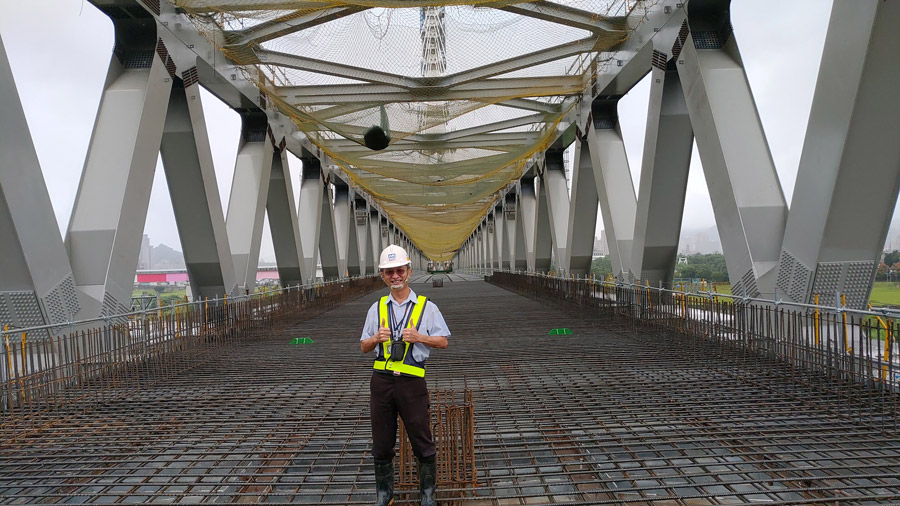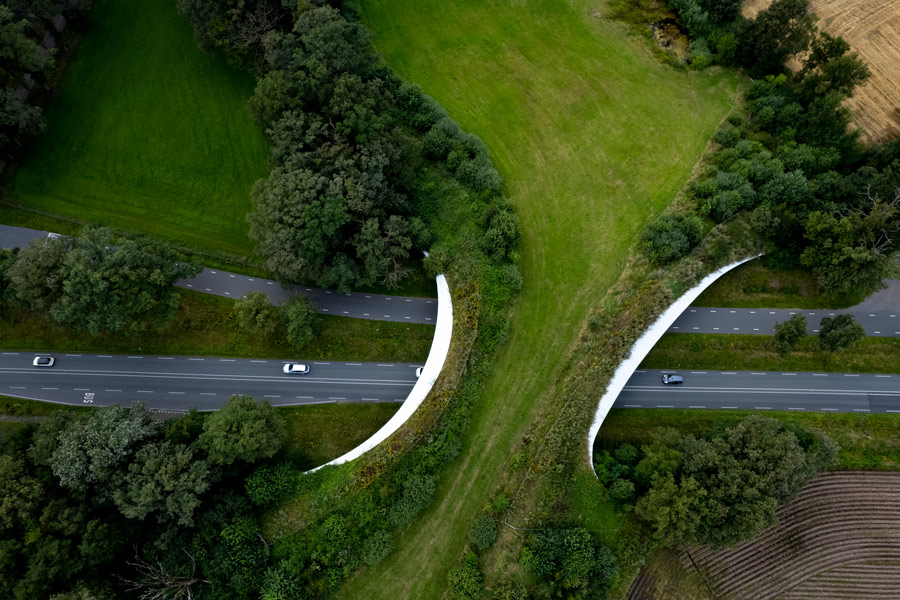A sustainability assessment system for bridge engineering
Dr Tai-Yi Liu, Chief and Professional Engineer with the New Asia Construction and Development Corporation, together with colleagues from the National Taiwan University, has developed a tool for assessing sustainability for green civil infrastructures. This innovative Sustainability Assessment System for Green Civil Infrastructure provides a functional and reliable tool to help engineers develop more ecologically and environmentally friendly civil infrastructures. Dr Liu demonstrates the use of the system to determine the sustainability achievement of a bridge engineering case study.
The growing concerns of global warming due to sustainability issues are prominent throughout engineering. Key assessment indicators have been established to evaluate sustainability achievements that avoid harmful impacts such as increased CO2 emission, depletion of resources, and adverse effects on the environment and ecology caused by a project’s construction. Sustainable development can meet the present requirements without compromising the ability of future generations to meet their own needs.
A green civil infrastructure is an environmentally friendly civil engineering system that causes the least possible damage to the environment and society during the project lifecycle. Dr Tai-Yi Liu, Chief and Professional Engineer with the New Asia Construction and Development Corporation in Taiwan, and his colleagues from the Department of Civil Engineering at the National Taiwan University, have developed a tool for assessing sustainability for green civil infrastructures, including bridges.

Sustainable criteria
The prevention of harmful impacts on the environment during a project’s lifecycle is the rationale behind sustainability research. Dr Liu describes how the innovative Sustainability Assessment System for Green Civil Infrastructure (SASGCI) provides a functional and reliable tool to help engineers develop more ecologically and environmentally friendly civil infrastructures. SASGCI evaluates to what extent civil infrastructures achieve a wide range of sustainability criteria. These include maintaining safety management, risk mitigation and reliability, as well as saving energy and minimising the CO2 emission and detrimental impacts on the environment and ecology throughout an infrastructure’s lifecycle. Engineers should seek to optimise the landscape of a project development zone and maximise a project’s benefits as well as extending its durability. Moreover, they should aim to both reduce and recycle the wastes produced during the project’s lifecycle. Preserving the local culture and upholding social conscience is also desirable, while encouraging creativity and maintaining a reasonable cost during the lifecycle of the project.
Methodology
In addition to reviewing the literature, the research team carried out face-to-face interviews with 47 experts comprising consulting engineers, construction engineers, professors, and government officials in Taiwan. The participants averaged 27 years’ experience in areas including structures, bridge engineering, geotechnical engineering, construction management, ecology, environment, transportation, energy, safety, and risk management. The researchers also performed a case study demonstrating the applicability of the SASGCI evaluation tool.
SASGCI provides a functional and reliable tool to help engineers develop more ecologically and environmentally friendly civil infrastructures.
The questionnaire was designed to establish the relative importance of ten key indicators. It elicits the experts’ opinions of the importance of 48 evaluation items during the design, construction, operation, and demolition phases of four elements of civil infrastructures – bridges, tunnels, slopes, and buildings. The experts selected the importance of each item from a five-point Likert scale. To determine the weight of importance of each key indicator, the researchers employ two quantitative approaches: Top Two Boxes Theory and Multiple Attribute Value Theory to analyse the data.

The ‘top-two boxes’ refer to the top and second-highest scoring responses. In this questionnaire, the scores range from four points to zero points, so the top-two boxes denote four points and three points. The top two boxes’ score is calculated using the percentage of four points and three points in the sampling population.
Multiple attribute value theory (MAVT) is used to calculate the weights from the evaluation items of multiple attributes at different levels. MAVT addresses the relative weights of obtaining a specific level of performance. In this analysis, the weight calculation process is divided into three levels. The ten key indicators form level 1, the evaluation items form level 2, and the four lifecycle stages make up level 3.
The rates and weights in each level of the SASGCI are calculated in three steps. First, the relative weight of each attribute is determined. Then the importance weight of each attribute is calculated. Finally, the weights for the key attributes in the first level are integrated with the weights obtained from the sub-levels.

Analysis
Summarising the different occupations and educational backgrounds of the experts, 22% work in universities, 27% in government positions and 51% in industry, 11% are educated to bachelor level, 64% have masters qualifications and 25% have doctorates.
Dr Liu and his team carried out detailed calculations for the weights of the three levels of the key indicators. They present the step-by-step calculation for weights of sustainability key indicators for bridges. The results demonstrate that the design stage has the most influence on the sustainability achievements for a newly developed bridge project.
The research team found that the weights of the ten key indicators for bridges are as follows: risk mitigation and reliability, 15.3%; durability, 15.1%; landscape, 11.5%; ecology, 10.6%; benefit and function, 9.7%; environmental protection and carbon emissions reduction, 9.5%; waste reduction, 8.5%; energy saving, 7.1%; creativity, 7.0%; and humanities and culture reservation, 5.6%.
Sustainability evaluation for bridges using SASGCI
In addition to the weight of importance for each key indicator, evaluators using SASGCI can select one of five options to determine the performance of the evaluation for each stage.

These five performance categories are awarded points as follows: very good receives two points; good collects one point; not applicable (or average) zero points; bad gets minus one point; and very bad minus two points. The negative points mean the evaluator considers that a harmful effect will be created in relation to this evaluation item during the project’s lifecycle.
The performance point allocated to each evaluation item is then multiplied by the weight of that evaluation item at all four stages. These are then added together to calculate the scores of each evaluation item for all ten key indicators. The final score for the sustainability achieved by a particular project is the normalised sum of the scores of all 48 evaluation items. The final score is normalised so that it lies on a 0–100 scale and can therefore be compared with other projects’ scores. Based on its final score, SASGCI can award a project’s sustainability achievement a certificate grade of certified, bronze, silver, gold or diamond.
A detailed design is required when evaluating a new bridge project. A bridge that is under construction or in service can be evaluated directly based on its actual performance.
Case study: the Baimi Scenic Bridge
The Suhua Highway Improvement Project in eastern Taiwan opened to traffic in January 2020. It has a total length of 38.8 km with eight tunnels, thirteen bridges and 5.8 km of embankments and cuts. Dr Liu was responsible for the construction management of the project, so the research team selected one of these bridges, the Baimi Scenic Bridge, as the case study to verify the applicability of SASGCI to bridge evaluation.

Sustainability considerations
Dr Liu explains how sustainability issues, such as ecology, landscape, carbon reduction, and cultural preservation, for the lifecycle of the Suhua Highway Improvement Project have been taken into consideration. The primary sustainability practices include a carbon footprint study which led to the engineers modifying the concrete mixture for carbon reduction and improving the operational efficiency of equipment and machines. The design also incorporates local culture into the bridge architecture.
The results demonstrate that the design stage has the most influence on the sustainability achievements for a newly developed bridge project.
Ecological conservation
Biologists developed a research programme to monitor changes in species’ population and health during the construction process. The highway alignment was adjusted to avoid removing trees. The electrical control room was built underground to minimise impact on the above-ground environment. Efforts have been made to prevent animals from roadkill together with the installation of light-cutting devices to protect insects during the evenings.
Cultural preservation
During the excavation of the bridge foundation, engineers discovered ancient human ruins. These ‘Hanbern Historic Remains’ were found to be the relics of a Neolithic culture from 1100–1800 years ago. Bridge construction ceased for several years due to the archaeological significance and resumed when the archaeologist had completed their on-site study.

SASGCI evaluation
The evaluation committee was made up of experts from the Ministry of Transportation and Communication of the Republic of China together with some professors specialising in bridge engineering and transportation. After a detailed discussion among the evaluation committee members, performance points were allocated to each stage of the ten indicators and the evaluation scores were calculated. The Baimi Scenic Bridge obtained a final score of 84.50 points. This means that the BSB can be certified as ‘gold grade’ on sustainability achievement.
Sustainable civil infrastructure
Dr Liu and the research team have developed the Sustainability Assessment System for Green Civil Infrastructures as an applicable and reliable assessment system. The successful evaluation of the Baimi Scenic Bridge demonstrates that the SASGCI is a practical and functional tool for determining the sustainability achievement of civil infrastructures throughout their lifecycles.
Personal Response
What initially sparked your interest in green civil infrastructures?
Engineers and the general public are more and more concerned by sustainability issues. Establishing a sustainability assessment system for green civil infrastructures is an essential approach to achieving the expected goal of sustainability.